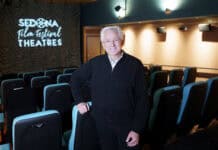With the Sedona Oak Creek Airport Authority steadily becoming a more popular destination for private pilots, the Sedona Fire District’s Governing Board felt it was time to take a look at fire capabilities in the event of a major accident.
“What brought this issue to light was the fact that we have had multiple incidents up there,” Board Chairman Dave Soto said during the Tuesday, July 16, meeting. “What concerned me most about it was, do we have an ongoing dialogue with management and the board up at the airport? Are we both doing what we’re supposed to be doing?
“Based on that type of airport with that rating, do we have the correct equipment up there and do we have the correct training as a fire entity on board? If not, then how do we get there?”
He added that if everything meets required standards then they are “golden” but if not he wants the district to find out where it’s deficient.
In the past year, SFD responded to the airport on 12 separate occasions for the following calls:
- Four lift assists. This is to help someone with limited mobility in and out of an aircraft.
- Three non-injury aircraft accidents.
- Three inter-facility transports. Transporting a non-ambulatory patient to or from an aircraft so that they may be taken to another care facility.
- Two aircraft stand-bys. Occasionally SFD is called to stand by when an aircraft is landing. Typically, these are European Union-registered jet aircraft and it is an insurance company requirement that they call SFD to stand by while landing.
Even though the district does not provide dedicated aircraft crash rescue services for the airport, SFD Acting Chief Jayson Coil said his crews have attended training hosted by the airport. That training has focused on such issues as airport operations, aircraft safety, safety dealing with downed aircraft and other aviation safety-related topics.
Coil said during his 21-year tenure with the district the majority of incidents that would be considered major involved aircraft going off the runway. He said the steep slope of the mesa and thick desert vegetation adds to the rescue risks for those injured and fire personnel.
There are 13 airports statewide that require on-site fire suppression personnel — as required by the FAA — based on the number of landings and arriving passengers throughout the year. Sedona is not one of them,
“To train and equip our firefighters to a higher level for airport response, given what those responses tend to be, I don’t think it’s warranted,” Coil said. “I do tend to include that in our entire risk analysis.”
To that, Governing Board Member Gene McCarthy said he agrees but that with larger private jets landing here, he does have some concerns.
“All it takes is one incident where one of those jets go off the runway or make a bad landing with jet fuel on the runway,” he said. “We don’t have any fuel or foam systems up there. It would seem to me the responsibility then is with the airport, knowing what the possible outcome could be. That’s just my opinion.”
Coil said he’s unsure whose responsibility it would be to have special aviation equipment on hand but that he is happy to discuss that with airport officials.
“You all bring up a good point as to who is responsible financially,” Board Clerk Corrie Cooperman said. “It seems like the airport would be responsible for having the foam system on site, ready for us to be able to use.”
The item will be placed on a future agenda — as early as September — for possible action.
Ron Eland can be reached at 282-7795, ext. 122 or by email at reland@larsonnewspapers.com
